A dynamic curvature for the first bridge on the West Line Road
in ARCHITETTURA | architecture
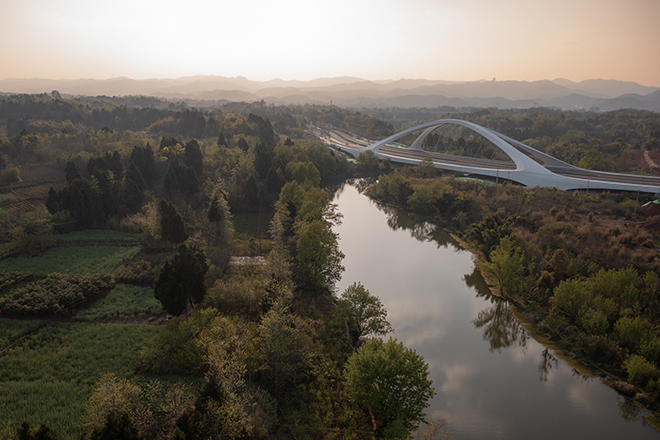
© Arch Exist I Chengdu West First Bridge.
Double-arch bridges are not all the same. The one – road, pedestrian and cycle path – just built in Chengdu on the Jiangxi River, a tributary of the Tuojiang River in the Chinese province of Sichuan, is an eloquent testimony of this statement. This engineering work, following a design competition won in 2019 by the Zaha Hadid Architects (ZHA), is the first in a series of bridges on the state road called West Line Road, the future western section of the Airport New Town ring-road and cycle route. 295 meters long, with a 185-meter central span and 55-meter secondary spans reaching to the riverbanks, the viaduct consists of two primary steel arches that, raising from either side of the road deck, become thinner until they join at a height of 30 meters (with a height to span ratio of approx. 1:6); all following an axis of curvature (with a radius of about 450m) dictated by the road alignment that seems to take into consideration the morphology of the river course.
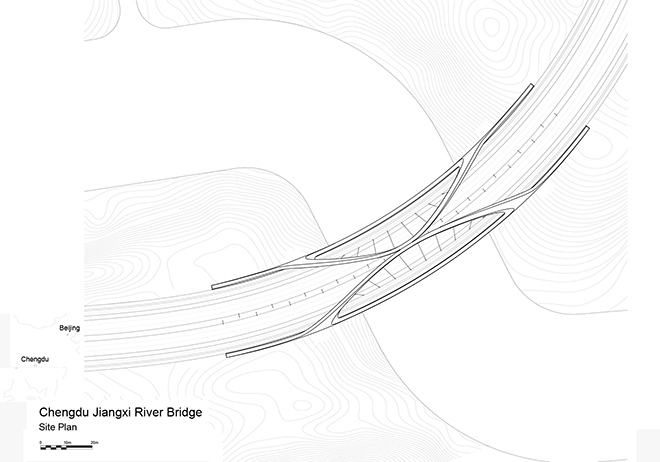
© ZHA I Chengdu West First Bridge. Site Plan.
For this particular dynamic form, the architects (in collaboration with the structural engineers of Buro Happold and the China Southwest Architectural Design & Research Institute) made use of a software capable of analyzing all the loads: the one of the infrastructure, the one of the vehicles in movement and the wind load, as well as the effects on the structure of environmental conditions such as the temperature of the site and the extraordinary events that statistically recur every 200 years, even if current climatic changes make them more frequent today.
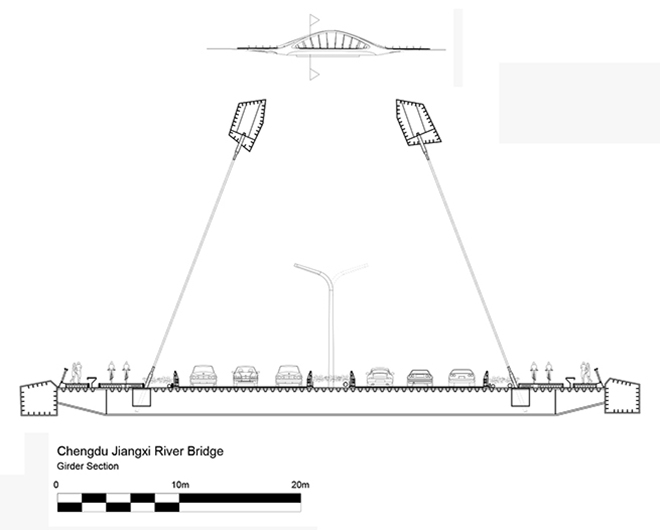
© ZHA I Chengdu West First Bridge. Girder Section.
The result is a monolithic structure consisting essentially by three main parts: the two box arches (just apparently equal because they curve inwards), the two respective “shoulders” (perimeter box beams) and a road deck of 13,860m2. The steel box sections of each arch have been prefabricated in dimensions to facilitate transport and assembly on site. The same goes for the sections of the perimeter caissons, which taper towards the center. They have been prefabricated in modules to be joined together with on-site welding. The prefabricated sheet metal crossbeams of the bridge were delivered to the construction site and connected to the edge beams by means of a bolted cover plate joint. The road deck (about 50m wide) was built with prefabricated panels fixed to the crosspieces by means of concrete castings on site.
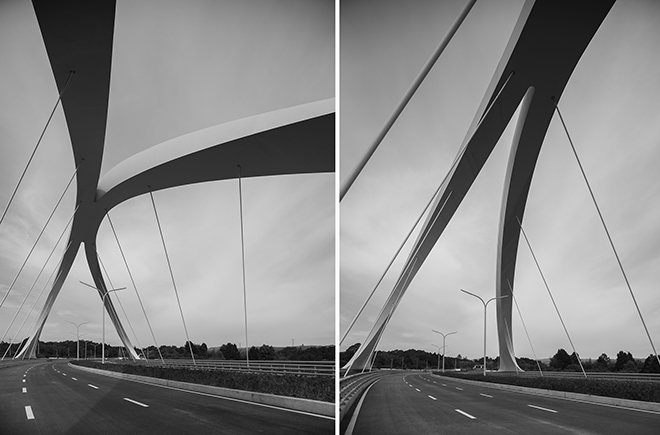
© Liang Xue I Chengdu West First Bridge.
Cable anchors are included within the road deck. These stays resist the horizontal outward thrust of each arch and greatly reduce the horizontal loads on the bridge foundations. The mobile cranes lifted all the prefabricated elements (steel and concrete) throughout the bridge assembly period. The three bays rest on intermediate piers at the starting points of the arches on each river bank. The bored piles and bridge abutments were constructed using conventional in situ reinforced concrete techniques. The bridge will be passable after the completion of the new ring road.
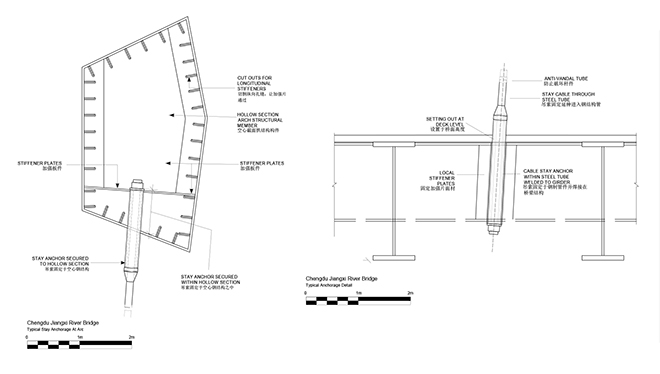
© ZHA I Chengdu West First Bridge. Typical stay anchorage at Arc. Typical anchorage detail.
We believe the geometry of this first bridge on the West Line Road is overmuch compared to its function. We do not know how many viaducts will be built in the future along this state road, but we assume that ZHA has been awarded to relativize this project with the scope (from the client’s side) to gain an entrance/exit “gate bridge” for this new road axis – a piece of high architecture rather than a mere engineering one. This would justify a such “muscular” and expensive “architectural gesture” than necessary. Moreover, even the Eiffel Tower was initially conceived as an engineering work, but with those four not load-bearing arches that open from the base up to the first level of the tower, located at a height of about 50-meter, that tower became an architectural timeless masterpiece.
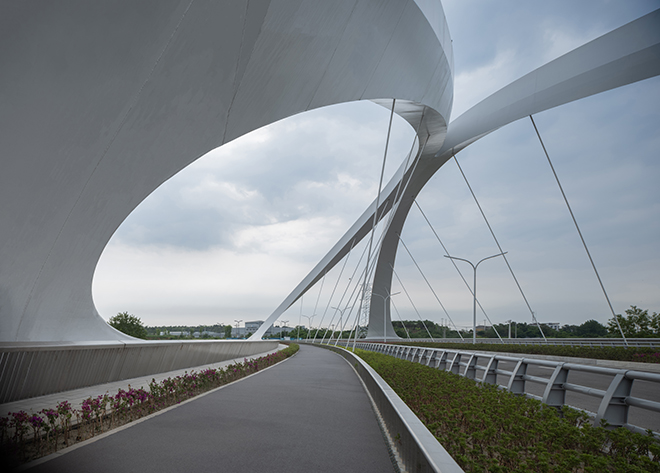
© Liang Xue I Chengdu West First Bridge.
